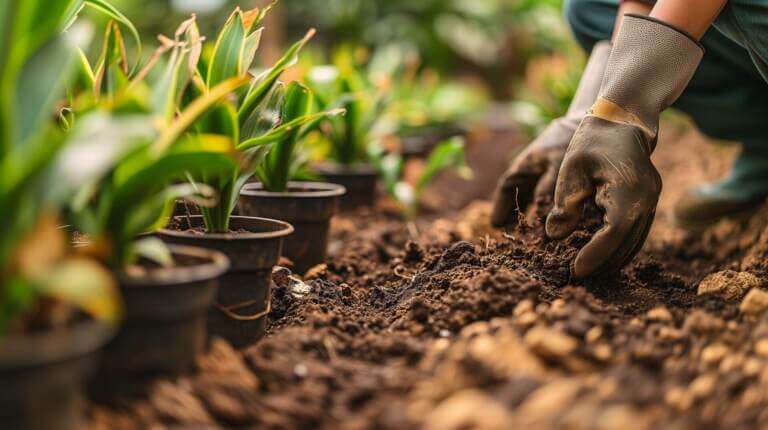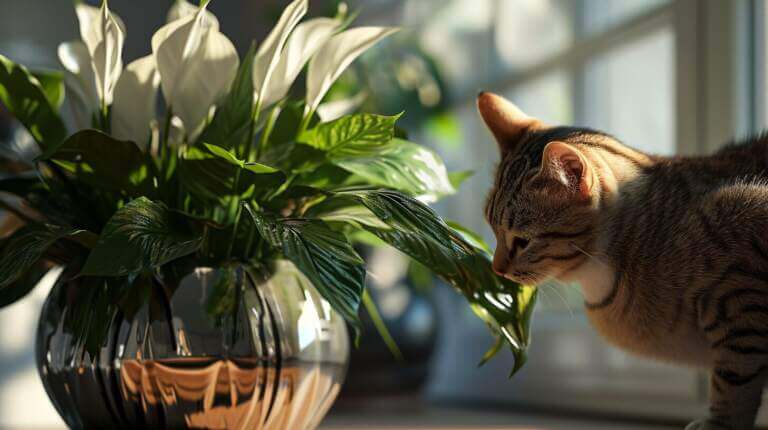How to Revive a Drooping, Wilting, Dying String of Pearls Plant
If you have a string of pearls plant that is drooping or wilting, don’t panic! With the right care and attention, you can revive your plant and bring it back to its full glory. In this article, I will share expert tips on how to save a wilting string of pearls, so you can enjoy the beauty of this unique succulent in your indoor garden.
Key Takeaways:
- Proper watering is crucial for reviving a drooping or wilting string of pearls.
- Provide your plant with adequate light, ensuring it gets bright but indirect sunlight.
- Address pest infestations promptly to prevent further damage to your plant.
- Correct potting mix and drainage issues to promote healthy growth.
- Consider repotting and pruning to stimulate new growth and revive your string of pearls.
Common Problems and Causes of Drooping or Wilting String of Pearls
When a string of pearls plant starts to droop or wilt, it can be a cause for concern. Understanding the common problems and their causes is essential for effectively reviving your plant. Here, I will discuss the primary issues that can lead to drooping or wilting in a string of pearls, helping you identify and address the underlying causes.
Watering Issues
One of the most common culprits behind a drooping or wilting string of pearls is improper watering. Overwatering can lead to root rot and suffocation of the plant, causing it to lose its vitality. On the other hand, underwatering can result in dehydration and nutrient deficiency, leading to wilting. It is crucial to find the right balance and provide consistent, adequate moisture for your plant.
Insufficient Light
String of pearls plants thrive in bright, indirect light. Insufficient light can cause weak growth and drooping in the plant. If your string of pearls is not receiving enough light, it may stretch towards the light source, resulting in elongated and weakened stems. Providing adequate light is vital for the overall health and well-being of your plant.
Pest Infestation
Another common problem that can cause drooping in a string of pearls is pest infestation. Aphids and mealybugs are common pests that can feed on the plant’s sap, leading to weakened stems and wilting. Regularly inspecting your plant for signs of pests and taking immediate action to control and eliminate them is crucial for reviving a drooping string of pearls.
| Common Problems | Causes |
|---|---|
| Watering issues (overwatering or underwatering) | Root rot, dehydration, nutrient deficiency |
| Insufficient light | Weak growth, elongated stems |
| Pest infestation | Weakened stems, sap depletion |
Proper Watering Techniques for Reviving a Drooping or Wilting String of Pearls
Proper watering is essential in reviving a drooping or wilting string of pearls. This succulent requires a delicate balance of moisture, as overwatering or underwatering can lead to its decline. Here are some expert tips on how to water your string of pearls correctly:
Determining the Right Amount of Water
The string of pearls plant prefers to be slightly dry between waterings. To determine if it’s time to water, gently press your finger into the soil. If it feels dry up to your first knuckle, it’s time to water. However, if it still feels slightly moist, wait a few more days before watering.
Frequency of Watering
String of pearls plants don’t require frequent watering. In fact, overwatering is a common problem that can lead to root rot and wilting. Water your plant thoroughly, but only when the soil is dry. Aim to water your string of pearls once every 2-3 weeks during the growing season and reduce frequency during the dormant period.
The Importance of Allowing Soil to Dry Out
Proper drainage is crucial for this succulent. Ensure that the pot has drainage holes to prevent water from pooling at the bottom. After watering, allow excess water to drain completely. Avoid leaving the plant in standing water, as it can lead to root rot and eventual wilting.
Providing Adequate Light for a Reviving String of Pearls
Adequate light is crucial for the revival of a drooping or wilting string of pearls. This succulent thrives in bright but indirect light, so finding the right balance is essential. Here are some tips on how to provide adequate light for a wilting string of pearls:
- Find a bright location: Place your string of pearls plant near a window that receives bright, filtered light. Avoid placing it in direct sunlight as this can lead to sunburn and further damage the plant.
- Rotate the plant: Since string of pearls plants tend to grow towards the light, it’s important to regularly rotate the pot to ensure even growth and avoid lopsidedness.
- Consider artificial light: If you don’t have access to sufficient natural light, you can supplement it with artificial sources. Use a grow light specifically designed for succulents and ensure it is placed at the right distance from the plant.
Addressing Pest Infestations to Revive a Drooping or Wilting String of Pearls
One of the common causes of a drooping or wilting string of pearls plant is pest infestations. Pests like aphids and mealybugs can cause significant damage to your plant if left untreated. It’s important to address these infestations promptly to revive and save your string of pearls. To treat pest infestations in a drooping string of pearls, start by inspecting your plant for signs of pests. Look for small insects, white cotton-like substances, or sticky residue on the leaves and stems. If you notice any of these signs, it’s likely that your plant has been infested. An effective pest control method for string of pearls is to gently wash the plant with a mild soapy solution. Mix a few drops of dish soap with water and use a soft cloth or sponge to wipe the leaves and stems of your plant. Rinse thoroughly to remove any soap residue. This method helps to suffocate and remove the pests. For more severe infestations, you may need to use organic insecticidal soap or neem oil. Follow the instructions on the product label carefully and apply it to your string of pearls as directed. Be sure to cover all parts of the plant, including the undersides of the leaves where pests may hide.
| Pest Control Method | Description |
|---|---|
| Gentle Washing | Mix dish soap with water and wipe the plant to remove pests. |
| Organic Insecticidal Soap | Use a natural soap specifically formulated to kill pests. |
| Neem Oil | Apply neem oil to suffocate and deter pests. |
Addressing Potting Mix and Drainage Issues for a Reviving String of Pearls
A crucial aspect of reviving a drooping or wilting string of pearls is to correct potting mix and drainage issues. The right potting mix and proper drainage are vital for the overall health and well-being of your plant. Here, I will guide you on how to improve drainage for a drooping string of pearls and choose the ideal potting mix to help revive your plant.
Improving Drainage
Poor drainage is one of the common causes of drooping or wilting in string of pearls plants. To address this issue, it is important to ensure that excess water can easily escape from the pot. Firstly, choose a pot with drainage holes at the bottom. These holes allow excess water to drain freely, preventing waterlogging and root rot.
Choosing the Right Potting Mix
The choice of potting mix is equally important for successfully reviving a drooping string of pearls. Opt for a well-draining soil mixture specifically designed for succulents. These mixtures typically contain a combination of organic matter and inorganic materials like perlite or pumice. The organic matter provides nutrients to the plant while the inorganic materials aid in drainage by reducing compactness. One effective way to improve drainage is to add perlite to your potting mix. Perlite is a lightweight, porous material that helps aerate the soil and prevent water from pooling around the roots. Aim for a potting mix that has a good balance between moisture retention and drainage capabilities. By correcting potting mix and drainage issues, you can create a healthier environment for your string of pearls plant to recover and thrive. Remember to water your plant appropriately and provide adequate light to complement these efforts. With time and consistent care, your drooping or wilting string of pearls will regain its beauty and vibrancy.
Reviving a Drooping or Wilting String of Pearls with Repotting and Pruning
Repotting and pruning are essential techniques for bringing a drooping or wilting string of pearls plant back to life. By properly repotting your plant and strategically pruning away any damaged or dead parts, you can stimulate new growth and restore its vitality. Repotting: When repotting a drooping string of pearls, it’s important to choose the right-sized pot and provide proper aeration for the roots. Start by gently removing the plant from its current pot, being careful not to damage the delicate stems. Inspect the roots for any signs of rot or overcrowding. If necessary, trim away any rotting roots with clean, sharp scissors. Select a new pot that is slightly larger than the current one, ensuring it has drainage holes to prevent waterlogging. Fill the bottom of the new pot with a layer of well-draining soil or gravel, then place the plant on top, making sure the roots are spread out evenly. Fill in the gaps with fresh soil, lightly pressing it down to secure the plant. Water the newly repotted plant sparingly, allowing the soil to dry out between waterings. Pruning: Pruning is a crucial step in reviving a wilting string of pearls. Start by identifying any damaged or dead parts of the plant, such as wilted stems or discolored leaves. Using clean, sharp scissors or pruning shears, carefully trim away these unhealthy sections. Be sure to make clean cuts just above a node or joint to encourage new growth. Additionally, if your plant has become leggy or elongated, you can trim back the stems to promote a more compact and bushy appearance. Remember to sterilize your pruning tools before and after each use to prevent the spread of disease. After pruning, place your string of pearls in a location with bright, indirect light and continue to provide proper care.
| Benefits of Repotting and Pruning | How to Repot Your String of Pearls | How to Prune a Wilting String of Pearls |
|---|---|---|
| Stimulates new growth | Choose the right-sized pot | Identify damaged or dead parts |
| Improves root health | Gently remove the plant from the pot | Carefully trim away unhealthy sections |
| Enhances plant appearance | Inspect roots for signs of rot | Make clean cuts above a node or joint |







